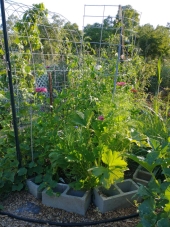
 13
13




“We can complain because rose bushes have thorns, or rejoice because thorn bushes have roses.” — Abraham Lincoln
 6
6




 4
4




 8
8




 2
2




Best serotonin-booster ever: garden time.
 3
3





 2
2




 5
5




“We can complain because rose bushes have thorns, or rejoice because thorn bushes have roses.” — Abraham Lincoln
 6
6




This is all just my opinion based on a flawed memory

 2
2




Catie George wrote:I have found that I can get away with overplanting if I have good soil fertility AND provide supplementary water, frequently. The wild card is having enough sunlight to keep disease at bay.
If I do my normal thing of trying to only water once a week, little to no added fertility, I need the more traditional spacings.




 4
4




“We can complain because rose bushes have thorns, or rejoice because thorn bushes have roses.” — Abraham Lincoln
 1
1




This is all just my opinion based on a flawed memory

 4
4




“We can complain because rose bushes have thorns, or rejoice because thorn bushes have roses.” — Abraham Lincoln
 2
2




 2
2




“We can complain because rose bushes have thorns, or rejoice because thorn bushes have roses.” — Abraham Lincoln








Jen Fulkerson wrote:Last year my tomatoes sat on the vine a didn't get red for a long time, then they didn't taste good. Then August came and the tomatoes produced, ripened and tasted great. Why??? I will never know.
 I think I just read about this and might have an answer for you!
I think I just read about this and might have an answer for you!


|
We all live in a yellow submarine. Me, this cat and this tiny ad:
heat your home with yard waste and cardboard
https://freeheat.info
|



